» posted on Sunday, September 9th, 2012 by Linda Lou Burton
Just Watch
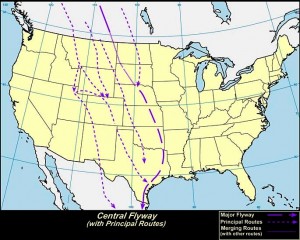 Linda Burton posting from Pierre, South Dakota – It stands to reason. There’s a lake just outside town that stretches clear to North Dakota. The river at the city’s edge is the longest river in the United States. With all that, you’d expect a fair amount of waterfowl would choose to live around Pierre, and it does. Gulls and ducks are common sights; I couldn’t name them myself, but birders have identified
Linda Burton posting from Pierre, South Dakota – It stands to reason. There’s a lake just outside town that stretches clear to North Dakota. The river at the city’s edge is the longest river in the United States. With all that, you’d expect a fair amount of waterfowl would choose to live around Pierre, and it does. Gulls and ducks are common sights; I couldn’t name them myself, but birders have identified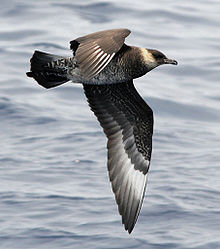 Sabine, Ring-billed and the Black-hooded Bonaparte gulls near Oahe Dam; the list of ducks includes Red-breasted Mergansers, Common Goldeneye, Bufflehead, and assorted little puddle ducks. You might even spot a rare yellow-billed loon, or a Pomerine Jaeger, aka Skua, a very aggressive Arctic bird (right). Because it’s not just the live-ins you get to see around here, South Dakota is “on the route” as millions of birds follow the Central migratory flyway across the state in spring and fall. Paradise for birdwatchers, paradise for birds.
Sabine, Ring-billed and the Black-hooded Bonaparte gulls near Oahe Dam; the list of ducks includes Red-breasted Mergansers, Common Goldeneye, Bufflehead, and assorted little puddle ducks. You might even spot a rare yellow-billed loon, or a Pomerine Jaeger, aka Skua, a very aggressive Arctic bird (right). Because it’s not just the live-ins you get to see around here, South Dakota is “on the route” as millions of birds follow the Central migratory flyway across the state in spring and fall. Paradise for birdwatchers, paradise for birds.
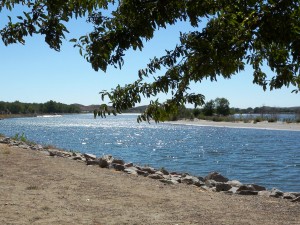 South Dakota’s diverse terrain gets the credit; in addition to the rivers and lakes, there are rolling hills and lush meadows and prairie marshes too. Nearly 400 species of birds live in the state, from soaring bald eagles to burrowing owls; the diversity is stunning. Yes, there is waterfowl along those Missouri River sandbars, but you’ll also find cottonwood trees, which attract dozens of songbirds – Bell’s Vireo, Baltimore oriole, and the Yellow-bellied Sapsucker, known for its mewing calls. Look everywhere; a pair of barn owls chose the tower on top of Oahe Dam to make a home. The
South Dakota’s diverse terrain gets the credit; in addition to the rivers and lakes, there are rolling hills and lush meadows and prairie marshes too. Nearly 400 species of birds live in the state, from soaring bald eagles to burrowing owls; the diversity is stunning. Yes, there is waterfowl along those Missouri River sandbars, but you’ll also find cottonwood trees, which attract dozens of songbirds – Bell’s Vireo, Baltimore oriole, and the Yellow-bellied Sapsucker, known for its mewing calls. Look everywhere; a pair of barn owls chose the tower on top of Oahe Dam to make a home. The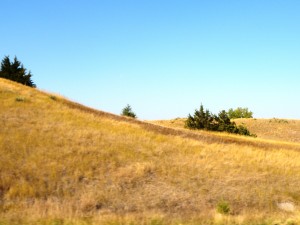 surrounding hills are where you’ll find those Burrowing owls. Wintering in those same hills you’ll find sharp-tailed grouse, gyrfalcons, and ferruginous hawks. The surrounding woodlands shelter neotropical migrants, those long-flying birds that like to winter in the Caribbean. (Why do they fly so far? Because it’s too far to walk.)
surrounding hills are where you’ll find those Burrowing owls. Wintering in those same hills you’ll find sharp-tailed grouse, gyrfalcons, and ferruginous hawks. The surrounding woodlands shelter neotropical migrants, those long-flying birds that like to winter in the Caribbean. (Why do they fly so far? Because it’s too far to walk.)
And there is the haven of LaFramboise Island; 580 forested acres sitting in the river right beside the city of Pierre. Kenny Miller, a Pierre birder, has documented over 122 species of birds living there; 61 breed in the area, like the blackcapped chickadee, hairy woodpecker, wild turkey, 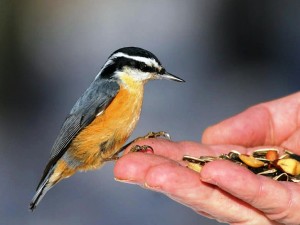 and great horned owl. Some, like the tiny red-breasted nuthatch (left), are merely winter residents; other species depend on the Island for food and cover as they pass through in spring and fall. Great blue heron nests have been spotted on the island, one of my very favorite birds; these elegant long-legged creatures regularly flew by my window when I lived by the river in Tennessee.
and great horned owl. Some, like the tiny red-breasted nuthatch (left), are merely winter residents; other species depend on the Island for food and cover as they pass through in spring and fall. Great blue heron nests have been spotted on the island, one of my very favorite birds; these elegant long-legged creatures regularly flew by my window when I lived by the river in Tennessee. 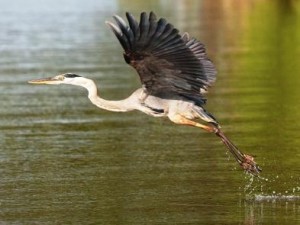
South Dakota makes it easy to watch; there are three distinct Birding Trails and comprehensive guides available from South Dakota Parks. The Great Lakes Trail in the center of the state is nearest Pierre, of course; along the river are steep draws filled with deciduous trees and shrubs, cottonwood groves, and miles of cliff faces and shoreline offering perfect habitat for everything from songbirds to raptors. The Glacial Lakes and Prairies Trail in the northeastern part of the state is where hundreds of pothole lakes formed when glaciers receded, offering woodlands, marshes and wetlands; the Southeastern Trail is largely undulating prairie; the Guide identifies 33 bird-watching stops on that Trail alone.
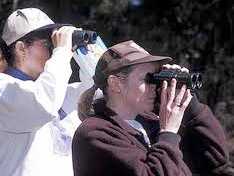 Bird watching, or birding, is surely one of the world’s greatest non-discriminatory activities. You can be as serious or as simple as you like. Join the Ornithologists Association and participate in official bird counts and record-keeping. Or get a pair of binoculars and a bird book and strike out with your kids or on your own to have some fun. Or simply hang some feeders out and get to know the birds that come straight to your yard. Just watch.
Bird watching, or birding, is surely one of the world’s greatest non-discriminatory activities. You can be as serious or as simple as you like. Join the Ornithologists Association and participate in official bird counts and record-keeping. Or get a pair of binoculars and a bird book and strike out with your kids or on your own to have some fun. Or simply hang some feeders out and get to know the birds that come straight to your yard. Just watch.
Department of Tourism, Birding in South Dakota, get birding guides here http://www.travelsd.com/Outdoors/Birding
South Dakota Ornithologists Union, dedicated to increasing knowledge about bird life in South Dakota, http://homepages.dsu.edu/palmerj/SDOU/
